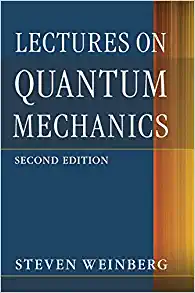Question
Ch. 7 Lab - Second Condition of Equilibrium Many machines use the lever principle. In general, a lever is a bar which is free to
Ch. 7 Lab - Second Condition of Equilibrium
Many machines use the lever principle. In general, a lever is a bar which is free to turn about a pivot called a fulcrum. An effort force turns the lever on its fulcrum so that a resistance force (load) can be overcome. The twisting force on eachside of the lever is called the "Torque". Its unit is N-m. The distance between the point where the effort force is applied,and the fulcrum is called the effort arm distance. The distance between the point where the resistance force is applied and the fulcrum is called the resistance arm distance.
When the lever is balanced: The resistance arm's "Torque" is equal to the effort arm's "Torque".
Part A:
1. Go to the PhET Simulation "Balancing Act" or here: https://phet.colorado.edu/en/simulation/balancing-act
2. Load the simulation and go to Balance Lab. Check the rulers box. Move the slider to the right.
3. Place your "load" of a 5 kg brick on the left side at 1.25 m.
4. Calculate the weight in Newtons of the block by multiplying the mass in kg by 9.8 m/s2. Place the weight into thedata table below.
5. Calculate the Resistance's Torque.
6. Place a 5 kg brick on the right side until the lever is balanced. Record the effort force and the effort arm distance in the table below.
7. Calculate the Effort's Torque.
| Resistance Force (kg x 9.8) Fr | Resistance Arm Distance Dr | Resistance Torque Fr x Dr | Effort Force (kg x 9.8) Fe | Effort Arm Distance De | Effort Torque Fe x De |
| N | 1.25 m | N | m |
Part B
1. Remove each of the bricks.
2. Place your "load" of a 20 kg brick on the left side at 0.25 m.
3. Calculate the weight in Newtons of the block by multiplying the mass in kg by 9.8 m/s2. Place the weight into thedata table below.
4. Calculate the Resistance's Torque
5. Place a 5 kg brick on the right side until the lever is balanced. Record the effort force and the effort arm distancein the table below.
6. Calculate the Effort's Torque. Show your work!
| Resistance Force (kg x 9.8) Fr | Resistance Arm Distance Dr | Resistance Torque Fr x Dr | Effort Force (kg x 9.8) Fe | Effort Arm Distance De | Effort Torque Fe x De |
| N | 0.25 m | N | m |
Part C:
1. Remove each of the bricks.
2. Place your "load" of a 5 kg brick on the left side at 1.5 m.
3. Calculate the weight in Newtons of the block by multiplying the mass in kg by 9.8 m/s2. Place the weight into thedata table below.
4. Calculate the Resistance's Torque.
5. Place a 10 kg brick on the right side until the lever is balanced. Record the effort force and the effort armdistance in the table below.
6. Calculate the Effort's Torque. Show your work!
| Resistance Force (kg x 9.8) Fr | Resistance Arm Distance Dr | Resistance Torque Fr x Dr | Effort Force (kg x 9.8) Fe | Effort Arm Distance De | Effort Torque Fe x De |
| N | 1.5 m | N | m |
Part D:
1. When the lever was balanced, how did the Torque of the effort compare to the Torque for the resistance?
2. What unit should be used for the lever arm's Torque?
3. Using what you learned, complete the missing information in the following balanced lever.
| Resistance Force (kg x 9.8) Fr | Resistance Arm Distance Dr | Resistance Torque Fr x Dr | Effort Force (kg x 9.8) Fe | Effort Arm Distance De | Effort Torque Fe x De |
| N | 0.15 m | N-m | 3 N | m | 6.0 N-m |
Step by Step Solution
There are 3 Steps involved in it
Step: 1

Get Instant Access to Expert-Tailored Solutions
See step-by-step solutions with expert insights and AI powered tools for academic success
Step: 2

Step: 3

Ace Your Homework with AI
Get the answers you need in no time with our AI-driven, step-by-step assistance
Get Started


